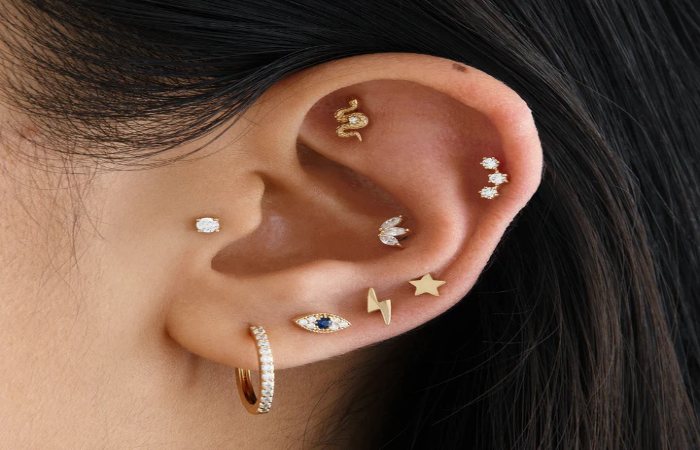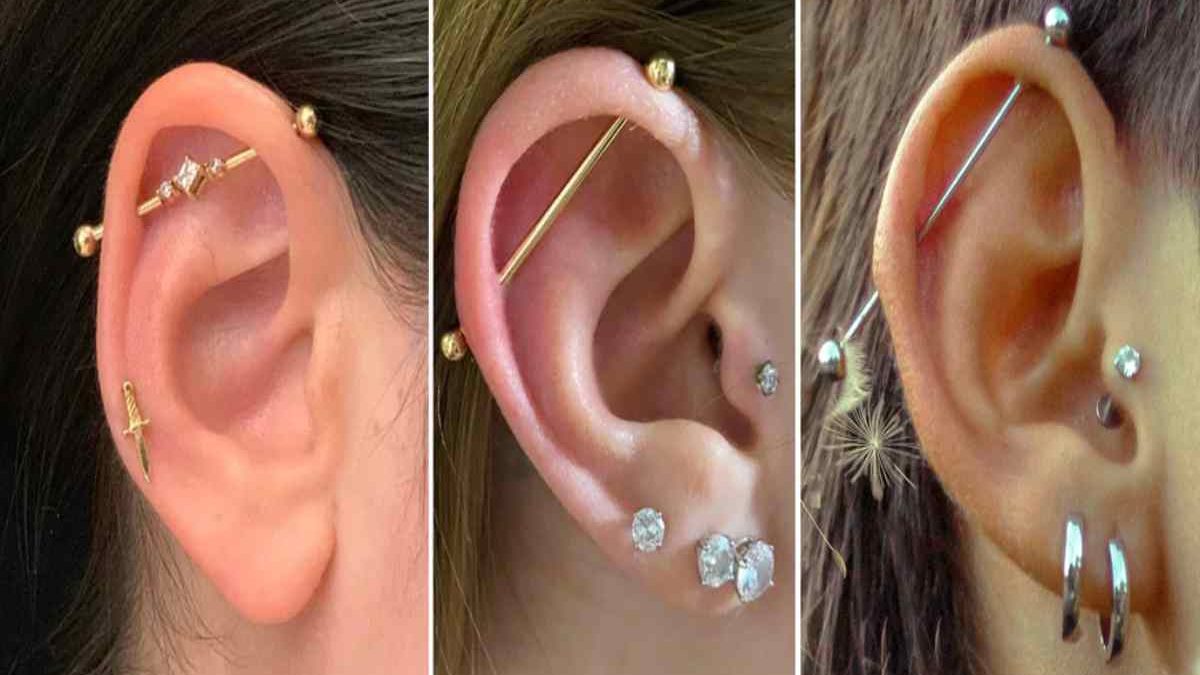Table of Contents
Introduction
Ear piercing your unique jewelry may look cool, but your body sees it differently: piercing your ears is a blessing. “Your ear has layers of skin. Then underneath in the earlobes there’s just fat. And in the high ear piercing there’s just tendon, so you’re piercing at runs through that tissue,” Michele Farber, MD, a board-certified dermatologist from the Schweiger Dermatology Group in Philadelphia and clinical and dermatology assistant at New York’s Mount Sinai Medical Center. Tells SELF.
You are creating a small cut in your ear and your skin. Which needs to regenerate around your new earring, which is why you need to take good care of the part to help it—the most beautiful of all, the best and most important of the best moments. Once the precautions are taken, the most uncomplicated measures, present and non-existent, eliminate the risk of irritation and infection.
How Extensively do Ear Piercings Usually Take to Heal?

Recovery time depends on the piercing area. Sarah Lacy, senior head of piercing research and innovation at Rowan Piercing Studio, said. “Most healing for an earlobe piercing occurs within six weeks, at which time the appetizer earring can be replaced with another piece of nickel-free jewelry.” It says SELF. (A “starter” earring is a basic stud. Which is usually the first earring you wear with a new piercing,” explains Lacy. Piercers typically use nickel-free starter earrings to reduce the chance of an allergic reaction.)
For a cartilage piercing (anywhere external the lobe). “Most surface healing occurs within the first 12 weeks, but it still takes a full year for the deepest part of the piercing to heal,” says Lacy. That’s why professionals usually stick with cartilage piercings for at least 12 weeks (any other time, ideally nickel-free) before replacing the starter earring with another earring. If you remove it sooner than that, you risk starting a puncture, even for a few hours. To close, according to Lacy. On that note. For lobe and cartilage piercings – make sure you always have an earring in your ear to prevent the hole from closing,
How Should you Take Care of Ear Piercings During your Recovery?
In the early stages of healing (the first six weeks for a section piercing and 12 weeks for a cartilage piercing), experts say you should follow the steps recorded below to keep the area clean and infection-free.
Wash the Part Daily – Ear Piercing
First things first: You should wash your hands with soap and water each time before touching your ear or ear piercing to avoid .Adding potentially harmful bacteria to the area. Said it recommends washing your ear piercing and the area around it once a day with a mild antibacterial soap (Dial Antibacterial Liquid Hand Soap, $2, Amazon) and warm water (to do this) for the entire healing period of 6 or 12 weeks. the shower is good). After washing, pat the area dry with a clean tissue or paper towel.
Keep Harmful Bacteria away – Ear Piercing
In addition to your daily cleaning with soap and water. You will need to clean the area further using an antibacterial solution 2-3 times a day (again, depending on whether it is a lobe piercing). Ear or cartilage) for the first 6 or 12 weeks. Your risk of dirt. You can use a cotton swab hollow with rubbing alcohol to clean the area. She said board-certified dermatologist and professor of dermatology at the Yale School of Medicine SELF. However, it is essential to remember that alcohol can be very harsh, especially if you have sensitive skin. “While alcohol is excellent at temporarily killing surface germs. It dries out the skin when used frequently, which can cause irritation and delay healing.
Consider Applying Soothing Products to the Area – Ear Piercing
If the skin around your piercing is a little dry and itchy. She said you can add a petroleum jelly product such as petroleum jelly or Aquaphor to keep the skin moist and protected. If you have irritated, dehydrated, sensitive skin. Consider talking to your doctor or dermatologist about a prescription topical antibiotic that can help calm it down and prevent infection. However, avoid using over-the-counter topical antibiotics in this area. Such as those containing bacitracin, as they can cause further irritation or an allergic reaction.
Conclusion
If your ear piercing is pierced, it’s normal to have some swelling and pain in the area, but this usually goes away after a few days, says Farber. However, in the days and weeks that follow. Be on the lookout for the next signs of an ear piercing infection: discharge. Generalized redness or signs of inflammation (depending on your skin tone), tenderness, the area is warm to the touch. Or you have a fever.

